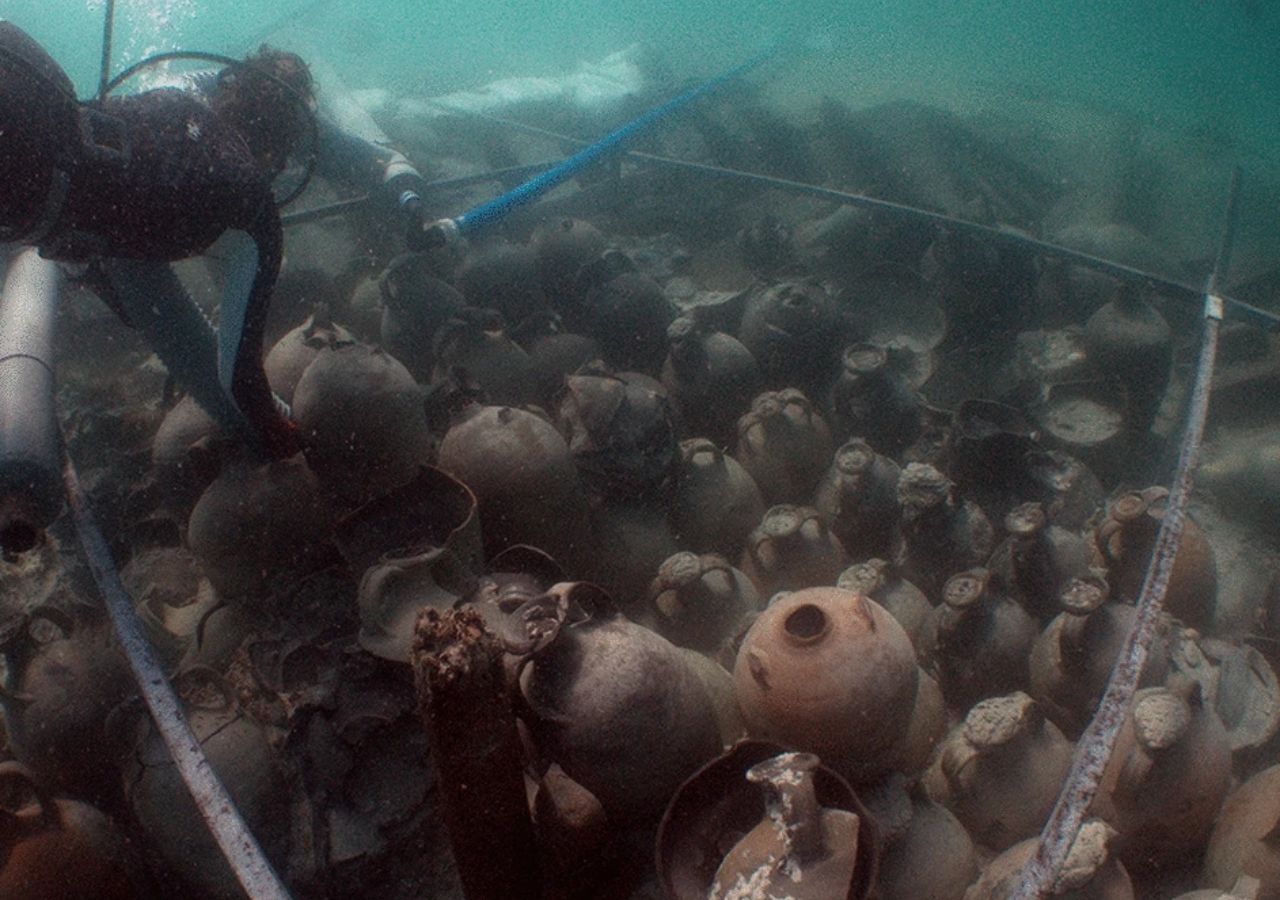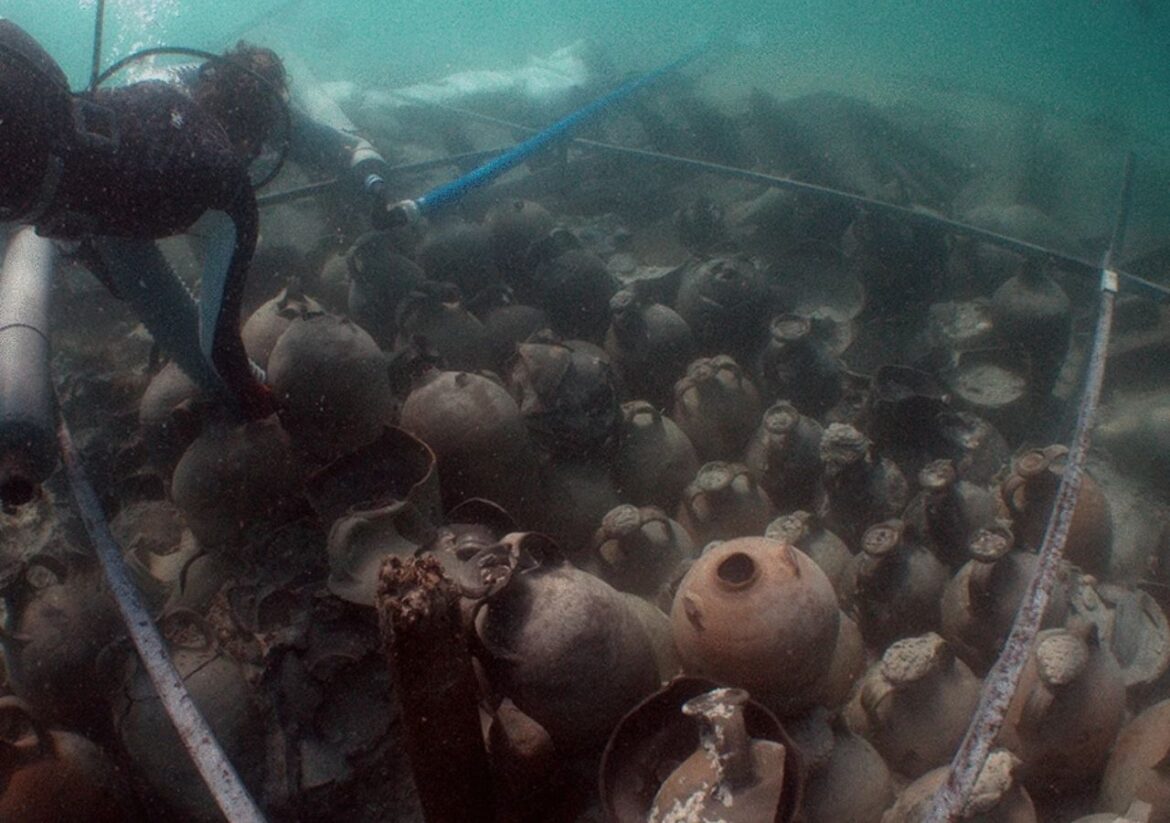
View of the excavation near the bow (Sector 1) with the perfectly stowed cargo. Credit: J. Rodríguez / CC BY 4.0
A nearly untouched Roman merchant shipwreck buried beneath the sands of Mallorca’s Playa de Palma is now at the center of a major archaeological effort. Discovered just two meters below the surface, the vessel has remained hidden for over 1,700 years. Experts say it could be one of the best-preserved shipwrecks of its kind ever found in the Mediterranean.
The ship, now officially named the Ses Fontanelles, dates back to the early 4th century and was first noticed in 2019 after strong waves shifted the sand. Local diver Felix Alarcon spotted pieces of wood sticking out near the shoreline and alerted authorities. This initial discovery launched a large-scale excavation led by the Arqueomallornauta project, in collaboration with several Spanish universities and supported by the regional government of Mallorca.
Archaeologists confirmed the ship measures about 12 meters long and up to 6 meters wide. It was exceptionally well-preserved thanks to a layer of sand that protected it from oxygen, preventing decay. The vessel still holds more than 300 Roman jars, known as amphorae, many of which are sealed and contain traces of oil, wine, and garum — a once-luxurious fermented fish sauce that was highly prized in Roman cuisine.
A glimpse into Roman trade and life
A single coin discovered beneath the ship’s mast helped researchers estimate that it sank around 320 A.D. The coin, minted in what is now Croatia, matches a Roman tradition of placing a coin under the mast to bring good luck during voyages. Experts believe the ship was on a commercial route, having departed from Carthago Spartaria, now known as Cartagena, one of the busiest Roman ports in ancient Spain.
Many of the amphorae are labeled with painted inscriptions detailing the contents, origin, producer, and taxes paid — information that offers rare insight into Roman trade and economic practices. Among the recovered cargo are sealed containers of liquaminis flos, a premium version of garum made primarily from anchovies, along with preserved wine and olive oil.
Personal items also surfaced from the wreck, including leather sandals, an oil lamp featuring the Roman goddess Diana, and tools such as a bow drill. These artifacts suggest the crew carried both personal belongings and repair equipment, hinting at life aboard the ship before it sank.
While most of the wooden structure remains intact, researchers revealed that the keel, the backbone of the ship, is missing. Because of this, experts plan to remove the vessel in sections. The process will begin in 2026 and is expected to span several years.
Preservation and future exhibition plans
The National Museum of Underwater Archaeology has joined the project and will oversee the recovery and conservation efforts. Once lifted, the remains of the ship will be transferred to San Carlos Castle, where they will undergo a long desalination process to stabilize the wood and preserve the structure for public display.
Experts say this shipwreck provides a rare opportunity to study Roman trade during a period of significant political and cultural change, including signs of early Christian influence found on some of the seals. The site is being hailed as one of the most important maritime discoveries in recent European history.
Researchers believe the ship and its contents will offer crucial insights into the commercial networks, shipping technology, and daily life in the late Roman Empire.


Dining and Cooking